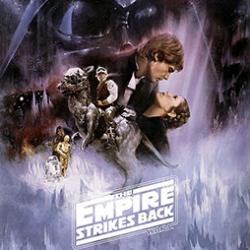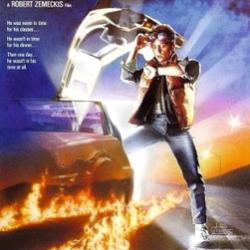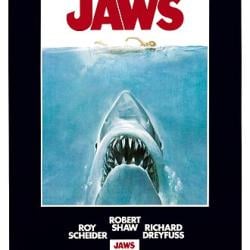Every year older movies and books that were written decades ago get released into the public domain. That means as an artist you can use the source material for your own creative endeavors without having to get permission to do so. You don’t have to pay any $$money to anyone or pay any licensing fees. It is part of the public domain and is yours to use for whatever your little heart wants to use it for.
Films and books released in 1927 became public domain in 2023.
Films and books released in 1928 became public domain in 2024.
Films and books released in 1929 became public domain in 2025.
I have only selected a small amount of New Public Domain stuff
For more recommendations and other interesting stuff click on the links below.
Public Domain Day 2023 is Coming: Here’s What to Know | Copyright Lately
Public Domain Day 2024 is Coming: Here’s What to Know | Copyright Lately
Movies
1st Talking Pictures
The Jazz Singer (1927)
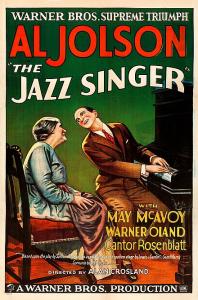
The first all-talking full-length feature film.
Laurel and Hardy
Before Abbott and Costello there was Englishman Stan Laurel (1890–1965) and American Oliver Hardy (1892–1957). They are one of the most successful comedy teams of all time. Starting their career as a duo in the silent film era, they later successfully transitioned to “talkies“. From the late 1920s to the mid-1950s, they were internationally famous for their slapstick comedy, with Laurel playing the clumsy, childlike friend to Hardy’s pompous bully.[1][2] Their signature theme song, known as “The Cuckoo Song”, “Ku-Ku”, or “The Dance of the Cuckoos” (by Hollywood composer T. Marvin Hatley) was heard over their films’ opening credits, and became as emblematic of them as their bowler hats.
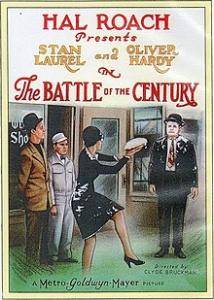
Do Detectives Think? (1927)
First film in which the duo appear in their standard costumes
Putting Pants on Philip (1927)
Their first “official” film together as a team.
The Battle of the Century (1927)
The film is famous for its use of more than 3,000 cream pies (although the Guinness Book of Records claims that as many as 10,000 may have been used) in the film’s climactic pie fight. For many years only three minutes from the film’s second reel, containing the pie fight, was thought to have survived, as the footage had been included in Robert Youngson‘s 1950s film documentaries.[3] However, the complete reel was rediscovered in 2015. It was released to the public on DVD and Blu-ray disc on June 16, 2020, as part of the Laurel & Hardy: The Definitive Restorations compilation of remastered films. Also in 2020, The Battle of the Century was selected for preservation in the United States National Film Registry by the Library of Congress as being “culturally, historically, or aesthetically significant.”

Should Married Men Go Home? (1928)
The first Hal Roach film to bill Laurel and Hardy as a team. Previous appearances together were billed under the Roach “All-Star Comedy” banner.
Two Tars (1928)
At a rail crossing, a small fender-bender incident turns into a major tit-for-tat retaliatory war among various motorists.
Big Business (1929)
The film, largely about tit-for-tat vandalism between Laurel and Hardy as Christmas tree salesmen
and the man who rejects them, was deemed culturally significant and entered into the National Film Registry in 1992.
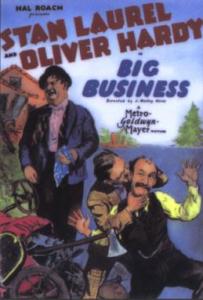
Unaccustomed As We Are (1929)
Laurel and Hardy’s first sound film.
Harold Lloyd
One of the most influential film comedians of the silent era, Lloyd made nearly 200 comedy films, both silent and talkies, from 1914 to 1947. His bespectacled “glasses character” was a resourceful, ambitious go-getter who matched the zeitgeist of the 1920s-era United States.
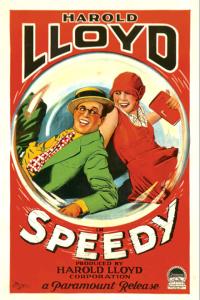
The Kid Brother (1927)This is considered by critics and fans to be one of Lloyd’s best films, integrating elements of comedy, romance, drama, and character development.
Speedy (1928)
Baseball-crazed city boy can’t keep job, upsets mobsters’ plans to ruin old man’s business.
Babe Ruth makes an appearance.
This is Lloyd’s only part-talking feature.
Welcome Danger (1929)
Botanist-turned-sleuth thwarts Chinese hoods in San Francisco.
This is Lloyd’s first all-talking feature.
Buster Keaton
He is best known for his silent film work, in which his trademark was physical comedy accompanied by a stoic, deadpan expression that earned him the nickname “The Great Stone Face”. Critic Roger Ebert wrote of Keaton’s “extraordinary period from 1920 to 1929” when he “worked without interruption” as having made him “the greatest actor-director in the history of the movies”
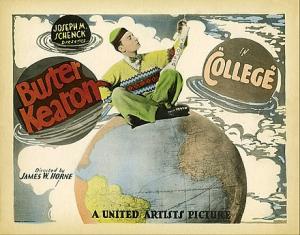
College (1927)
The Cameraman (1928)
Spite Marriage (1929)
Our Gang
38 Our Gang Comedies were released between 1927- 1929 including
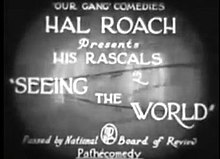
Seeing the World (1927) with Stan Laurel
Barnum & Ringling, Inc. (1928) with Oliver Hardy
Small Talk First OG sound film
Chaplin and Marxes
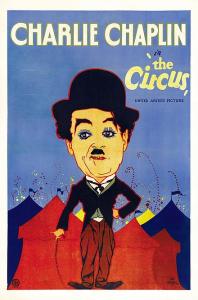
The Circus (1928) starring Charlie Chaplin
The Cocoanuts (1929) Starring the Marx Brothers
Douglas Fairbanks
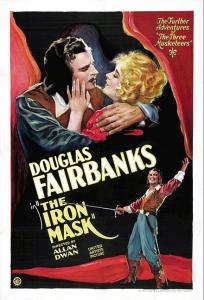
The Gaucho (1927)
The Iron Mask (1929)
The Taming of the Shrew (1929) with Mary Pickford
Greta Garbo
Love (1927)
The Mysterious Lady (1928)
Wild Orchids (1929)
The Kiss (1929) Garbo’s, and MGM’s, last silent picture
Frank Capra and Harry Langdon
Frank Capra (May 5, 1897 – September 3, 1991) was an Italian-American film director, producer and writer who became the creative force behind some of the major award-winning films of the 1930s and 1940s. Capra directed a total of 36 feature-length films (34 of which are known to survive) and 16 documentary films during his lifetime. His movies It’s a Wonderful Life, Mr. Smith Goes to Washington, and It Happened One Night are often cited among the greatest films ever made. Between 1927 – 1929 he made 12 films including…
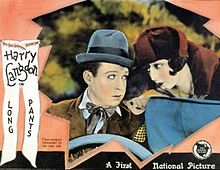
Henry “Harry” Philmore Langdon (June 15, 1884 – December 22, 1944) was an American comedian who appeared in vaudeville, silent films (where he had his greatest fame), and talkies.
Long Pants (1927)
Directed Frank Capra by starring Silent Film Comedian Harry Langdon
His First Flame (1927) Harry Langdon
Three’s a Crowd (1927) Harry Langdon
Fiddlesticks (1927, Short) Harry Langdon
The Matinee Idol (1928) Frank Capra
Submarine (1928) Frank Capra
Flight (1929) Frank Capra
Alfred Hitchcock
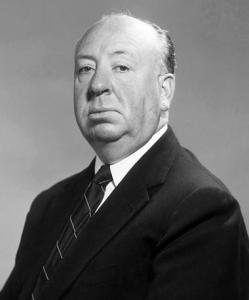
The master of thrillers directed 8 films between 1927 – 1929
Some of the films are..
The Lodger: A Story of the London Fog (1927)
The Ring (1927)
Downhill (1927)
The Farmer’s Wife (1928)
Easy Virtue (1928)
Champagne (1929)
The Manxman (1929)
Blackmail (1929)
Howard Hawks
Howard Hawks (1896–1977) was an American film director who made 40 films between 1926 and 1970. He is responsible for classic films in genres ranging from film noir, screwball comedy, crime, science fiction and Western.
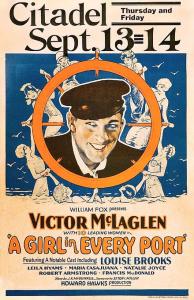
The Cradle Snatchers (1927)
Paid to Love (1927)
A Girl in Every Port (1928)
Fazil (1928)
Trent’s Last Case (1929)
Cecil B. DeMille
Cecil B. DeMille made 70 features. 52 of his features are silent films. The first 24 of his silent films were made in the first three years of his career (1913–1916). Eight of his films were “epics” with five of those classified as “Biblical”. Six of DeMille’s films—The Arab, The Wild Goose Chase, The Dream Girl, The Devil-Stone, We Can’t Have Everything, and The Squaw Man (1918)—were destroyed by nitrate decomposition, and are considered lost.[319] The Ten Commandments is broadcast every Saturday at Passover in the United States on the ABC Television Network
The King of Kings (1927)
The Godless Girl (1928)
Dynamite (1929)
John Ford
Upstream (1927)
Mother Machree (1928)
Riley the Cop (1928)
Napoleon’s Barber (1928) Lost
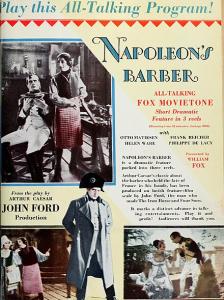
Fritz Lang
Fritz Lang (1890–1976) was an Austrian film director, producer and screenwriter. In Lang’s early career he worked primarily as a screenwriter, finishing film scripts in four to five days. Lang directed major German films of the silent and early sound eras.
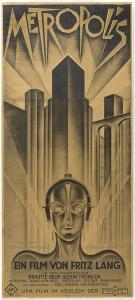
Metropolis (1927)
Spies (1928)
Woman in the Moon (1929)
Paul Leni
The Cat and the Canary (1927)
The Chinese Parrot (1927)
The Man Who Laughs (1928)
The Last Warning (1928/29)
King Vidor
The Crowd (1928)
The Patsy, also known as The Politic Flapper (1928)
Show People (1928)
Hallelujah (1929)
Walt Disney
Oswald the Lucky Rabbit (1927) 9 Cartoons
Oswald the Lucky Rabbit (1928) 18 Cartoons
Mickey Mouse in The Gallopin’ Gaucho/Steamboat Willie (1928)
Mickey Mouse (1929) 13 Cartoons
Silly Symphony (1929) 5 cartoons including The Skeleton Dance
Various Other Films
1927
Chang: A Drama of the Wilderness (1927)
It (1927) starring Clara Bow.
Napoléon (1927)
Tarzan and the Golden Lion (1927)
1928
The Wind (1928) starring Lillian Gish
Our Dancing Daughters (1928) Starring Joan Crawford
Feel My Pulse (1928) starring Bebe Daniels,
Lonesome (1928)
The Fall of the House of Usher, (1928) directed by James Sibley Watson
The Fall of the House of Usher (1928) directed by Jean Epstein, (France)
The Italian Straw Hat (1928)
Laugh, Clown, Laugh, directed by Herbert Brenon, starring Lon Chaney and Loretta Young
1929
Rio Rita (1929)
Man with a Movie Camera (1929) (USSR)
Seven Footprints to Satan (1929) written and directed by Benjamin Christensen
The White Hell of Pitz Palu (1929)– (Germany)
Academy Awards
The 1st Academy Awards ceremony, presented by the Academy of Motion Picture Arts and Sciences (AMPAS) and hosted by AMPAS president Douglas Fairbanks, honored the best films from 1 August 1927 to 31 July 1928 and took place on May 16, 1929, at a private dinner held at the Hollywood Roosevelt Hotel in Los Angeles, California. Tickets cost $5 ($85 in 2022, considering inflation); 270 people attended the event, which lasted 15 minutes. It is the only Academy Awards ceremony not broadcast on either radio or television; a radio broadcast was introduced for the 2nd Academy Awards.
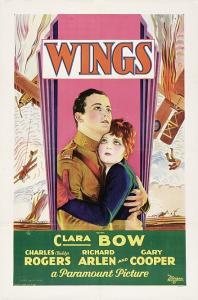
The first sound film to win an Academy Award for Best Picture.
White Shadows in the South Seas, directed by W. S. Van Dyke AA for Best Cinematography.
Religion at the Movies

The Passion of Joan of Arc (1928)
Noah’s Ark, (1928)
Books
Edgar Rice Burroughs (September 1, 1875 – March 19, 1950)
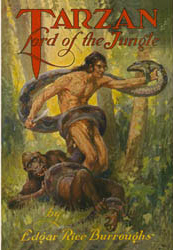
The Master Mind of Mars (1927)
Tarzan, Lord of the Jungle (1928)
Tarzan and the Lost Empire (1929)
G. K. Chesterton
(May 20, 1874 –June 15, 1936)
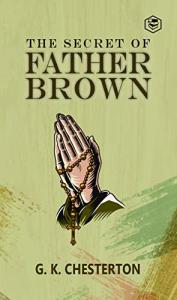
4. The Secret Of Father Brown (1927)
The Return of Don Quixote (1927)
Dame Agatha Christie
( September 15, 1890 – 12 January 12,1976)

Hercule Poirot
5. The Big Four (1927)
6. The Mystery of the Blue Train (1928))
Tommy and Tuppence
2. Partners in Crime (1929)
Superintendent Battle
2. The Seven Dials Mystery (1929)
Miss Marple
The Tuesday Night Club (1927)
Sir Arthur Conan Doyle
(May 22, 1859 – July 7, 1930)
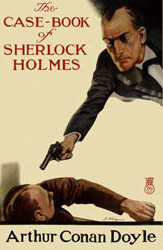
- The Case-Book of Sherlock Holmes(1927)
- “When the World Screamed” (1928) Professor Challenger
- “The Disintegration Machine” (1929) Professor Challenger
Hardy Boys

1. The Tower Treasure (1927)
2. The House on the Cliff (1927)
3. The Secret of the Old Mill (1927)
4. The Missing Chums (1928)
5. Hunting for Hidden Gold (1928)
6. The Shore Road Mystery (1928)
7. The Secret of the Caves (1929)
Ernest Hemingway
(July 21, 1899 – July 2, 1961)
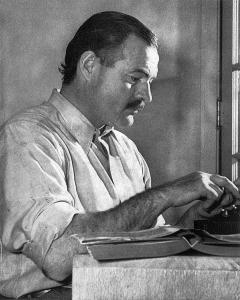
- Men Without Women(1927)
- In Another Country (1927)
- A Farewell to Arms (1929)
Ronald Knox
(February 17, 1888 – August 24, 1957)
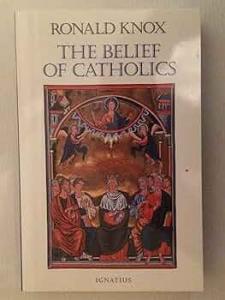
The Belief of Catholics (1927)
Miles Bredon
1. The Three Taps (1927)
2. The Footsteps At the Lock (1928)
8. The Mystery of Cabin Island (1929)
Hugh John Lofting
(January 14, 1886 – September 26, 1947)
- Doctor Dolittle’s Garden (1927)
- Doctor Dolittle in the Moon (1928)
A. A. Milne
( January 18, 1882 – January 31, 1956)
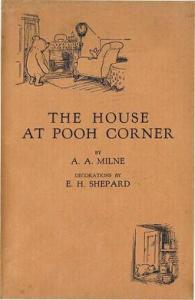
3. Now We Are Six (1927)
4. The House at Pooh Corner (1928)
Mystery and Action
Evelyn Waugh ( October 28, 1903 – April 10, 1966) Decline and Fall (1928)
Charles Edward Montague (1 January 1, 1867 – May 28, 1928) Action (1928), short stories
Leslie Charteris ( May 12, 1907 – 15 April 15, 1993), Meet the Tiger (1928)
Moray Dalton – One by One They Disappeared Hugh Collier Mysteries
Dorothy L . Sayers
( June 13, 1893 – December 17, 1957)
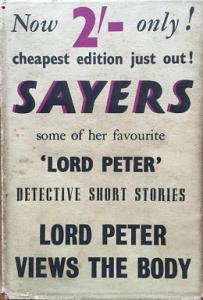
Peter Wimsey
3. Unnatural Death (1927)
4. Lord Peter Views the Body (1928)
5. The Unpleasantness at the Bellona Club (1928)
Great Short Stories of Detection, Mystery and Horror 1st Series (1928)
Molly Thynne -The Draycott Murder Mystery
Tom Swift
30. Tom Swift Circling the Globe (1927)
aka The Daring Cruise of the Air Monarch
31. Tom Swift and His Talking Pictures (1928)
aka The Greatest Invention on Record
32. Tom Swift and His House On Wheels (1929)
aka A Trip around the Mountain of Mystery
World of Pure Imagination
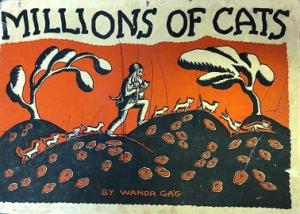
Walter Rollin Brooks (January 9, 1886 – August 17, 1958) Freddy Goes to Florida, 1927 (To and Again)
Joyce Lankester Brisley 1. Milly-Molly-Mandy Stories (1928)
John Masefield (June 1, 1878 – May, 12 1967) The Midnight Folk (1927)
Edward Wyke Smith (April 12, 1871 – May 16, 1935) The Marvellous Land of Snergs (proto-Hobbits) (1927)
Sir James Matthew Barrie, ( May 9, 1860 – 19 June 19, 1937)”Peter Pan” the play (1928)
Wanda Gág – Millions of Cats (1928)
Millions of Cats is a children’s picture book written and illustrated by Wanda Gág. The book won a Newbery Honor award in 1929, one of the few picture books to do so. Millions of Cats is the oldest American picture book still in print.
Dhan Gopal Mukerji – Gay Neck, the Story of a Pigeon (1928)
Felix Salten – Bambi, A Life in the Woods (1928) (Bambi. Eine Lebensgeschichte aus dem Walde, 1923)
Belgian cartoonist Hergé. Tintin in the Land of the Soviets (1929)
Erich Kästner – Emil and the Detectives (Emil und die Detektive) (1929)
Rachel Lyman Field (September 19, 1894 – March 15, 1942) Hitty, Her First Hundred Years (1929)
Alison Uttley – The Squirrel, The Hare and the Little Grey Rabbit (1929) (introducing Little Grey Rabbit)
Eric Philbrook Kelly (March 16, 1884 – January 3, 1960) The Trumpeter of Krakow (1929)
Ruth Plumly Thompson
(July 27, 1891 –April 6, 1976)
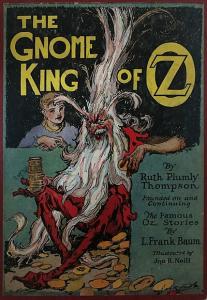
21. The Gnome King of Oz (1927)
22. The Giant Horse of Oz (1928)
23. Jack Pumpkinhead of Oz (1929)
Award Winning Books and Authors
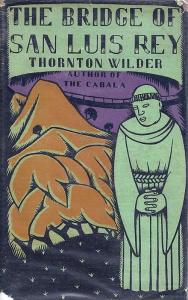
Willa Cather (December 7, 1873 – April 24, 1947) Death Comes for the Archbishop (1927)
Oliver Hazard Perry La Farge II (December 19, 1901 – August 2, 1963) Laughing Boy (1929) —won the Pulitzer Prize for the Novel (1930)
William Faulkner – The Sound and the Fury (1929)
Graham Greene – The Man Within (1929) His first Novel
Robert Nathan – The Bishop’s Wife
Erich Maria Remarque – All Quiet on the Western Front
Ilf and Petrov – The Twelve Chairs
John Steinbeck – Cup of Gold: A Life of Sir Henry Morgan, Buccaneer, With Occasional Reference to History (1929)
Julia Peterkin (October 31, 1880 – August 10, 1961) Scarlet Sister Mary (1928) —won the Pulitzer Prize for the Novel (1929)
Evelyn Waugh – Decline and Fall
Thornton Wilder (April 17, 1897 – December 7, 1975) The Bridge of San Luis Rey (1927)—won the Pulitzer Prize for the Novel (1928)
Non- Fiction
- Henry Beston – The Outermost House: A Year of Life On The Great Beach of Cape Cod
- William Wallace Cook – Plotto: The Master Book of All Plots
- Wolfgang Amadeus Mozart, Hans Mersmann –Letters of Wolfgang Amadeus Mozart
- Fridtjof Nansen-The First Crossing Of Greenland
- Luther Standing Bear–My People the Sioux
- Montague Summers-Vampires and Vampirism
- François Trochu–The Curé D’Ars: St. Jean-Marie Baptiste Vianney
- Alvin C. York–Sergeant York and the Great War (Men of Courage)
Music
Trying to determine the public domain status of music can present another trap for the unwary. As I’ve explained before, every piece of recorded music is comprised of two different copyrights. There’s a copyright in the underlying composition, which protects a song’s lyrics and musical arrangement. There’s also a separate copyright in a particular sound recording of that composition as performed by a recording artist. When you listen to music on the radio or a streaming service, you’re technically hearing both the composition and the sound recording of the composition.
The distinction between compositions and recordings is important to remember because these two types of copyrighted works won’t enter the public domain at the same time.
Sound recordings first published in 1928 are protected for an additional five years, so they won’t fall into the public domain until 2029 (95 years + additional 5 years = 100 years total). But don’t fret: sound recordings first published in 1923 will enter the public domain on January 1, 2024, as they pass the 100-year mark. Public Domain Day 2024 is Coming: Here’s What to Know | Copyright Lately
Published Music
1927
- “Ain’t She Sweet” w. Jack Yellen m. Milton Ager
- “Are You Lonesome Tonight?” w. Roy Turk m. Lou Handman
- “The Best Things In Life Are Free” w. B. G. De Sylva & Lew Brown m. Ray Henderson
- “Blue Skies” w.m. Irving Berlin
- “(I Scream You Scream, We All Scream for) Ice Cream” w.m. Robert King, Howard Johnson & Billy Moll
- “I’m Looking Over A Four Leaf Clover” w. Mort Dixon m. Harry Woods
- “Me And My Shadow” w.m. Dave Dreyer, Billy Rose & Al Jolson
- “My Blue Heaven” w. George A. Whiting m. Walter Donaldson
- Sometimes I’m Happy” w. Irving Caesar m. Vincent Youmans from the musical Hit the Deck
1928
- “Big Rock Candy Mountain” Harry McClintock
- “Button Up Your Overcoat” w. G. DeSylva& Lew Brown m. Ray Henderson. Introduced by Ruth Etting.
- “Can’t Help Lovin’ Dat Man” w. Oscar Hammerstein IIJerome Kern
- “Hooray for Captain Spaulding” w. Bert Kalmar m. Harry Ruby. Introduced by Zeppo Marx, Robert Greig, Margaret Dumontand Groucho Marx in the musical Animal Crackers and also performed by them in the 1930 film version.
- “I Wanna Be Loved by You” w. Bert KalmarHarry Ruby & Herbert Stothart. Introduced by Helen Kane and Dan Healy in the musical Good Boy. Performed by Miss Kane dubbing for Debbie Reynolds in the 1950 film Three Little Words.
- “Let’s Do It” w.m. Cole Porter. Introduced by Irene Bordoniand Arthur Margetson in the musical Paris.
- “Mack The Knife” w. (Eng) Marc Blitzstein (Ger) Bertolt Brecht Kurt Weill
- “Pirate Jenny” w. Bertolt BrechtKurt Weill
- “You’re The Cream In My Coffee” w. B.G. DeSylva & Lew Brown
1929
- “Happy Days Are Here Again” w. Jack YellenMilton Ager
- “Honeysuckle Rose” w. Andy RazafThomas “Fats” Waller
- “Puttin’ on the Ritz” w.m. Irving Berlin
- “Rock Island Line” w.m. Clarence Wilson (written)
- “Singin’ in the Bathtub” w. Herb Magidson& Ned Washington Michael H. Cleary
- “Singin’ in the Rain” w. Arthur FreedNacio Herb Brown
- “Walk Right In” Cannon, Woods, Darling, Suanoe
- “Why Was I Born?” w. Oscar Hammerstein II Jerome Kern
- “Without A Song” w. Edward Eliscu & Billy RoseVincent Youmans
1923 Sound Recordings
- “Yes! We Have No Bananas” by Billy Jones
- “Parade of the Wooden Soldiers” by Paul Whiteman and His Orchestra
- Swingin’ Down the Lane” by Isham Jones Orchestra
- “That Old Gang of Mine” by Billy Murray & Ed Smalle
- “Down Hearted Blues by Bessie Smith
- Barney Google,” by Ernest Hare and Billy Jones
- Swingin’ Down the Lane,” Isham Jones
- “Bambalina,” The Ray Miller Orchestra
- Waitin’ For the Evenin’ Mail,” Tennessee Ten





